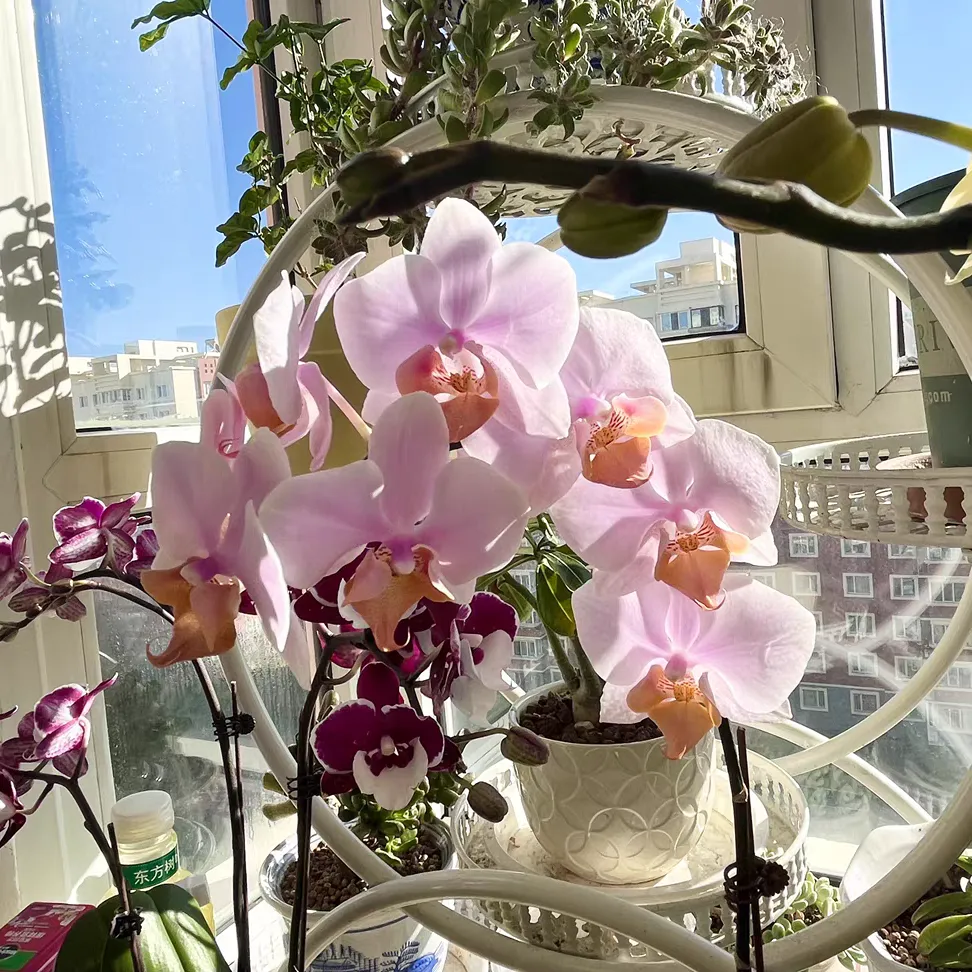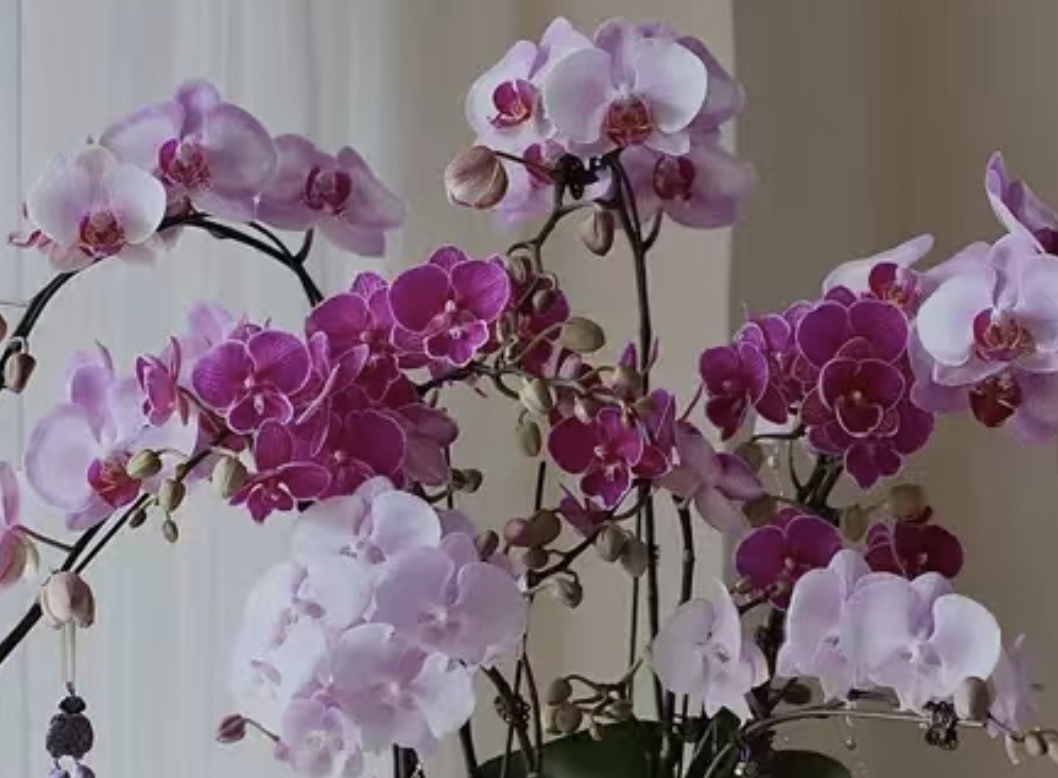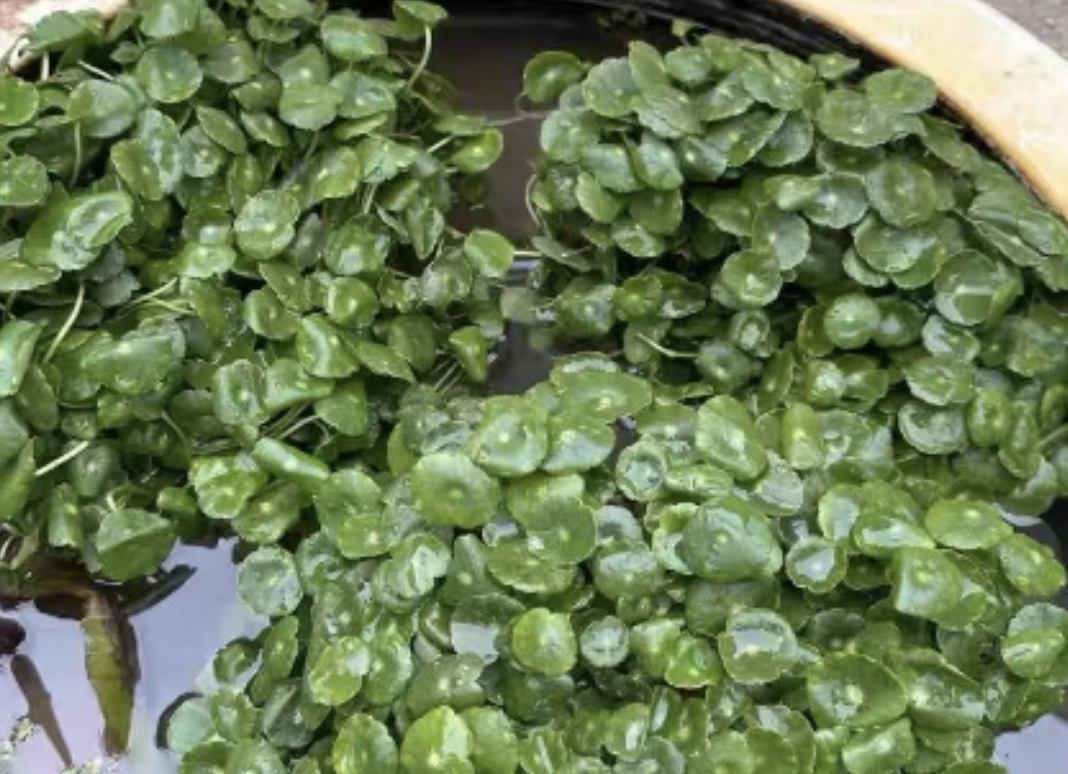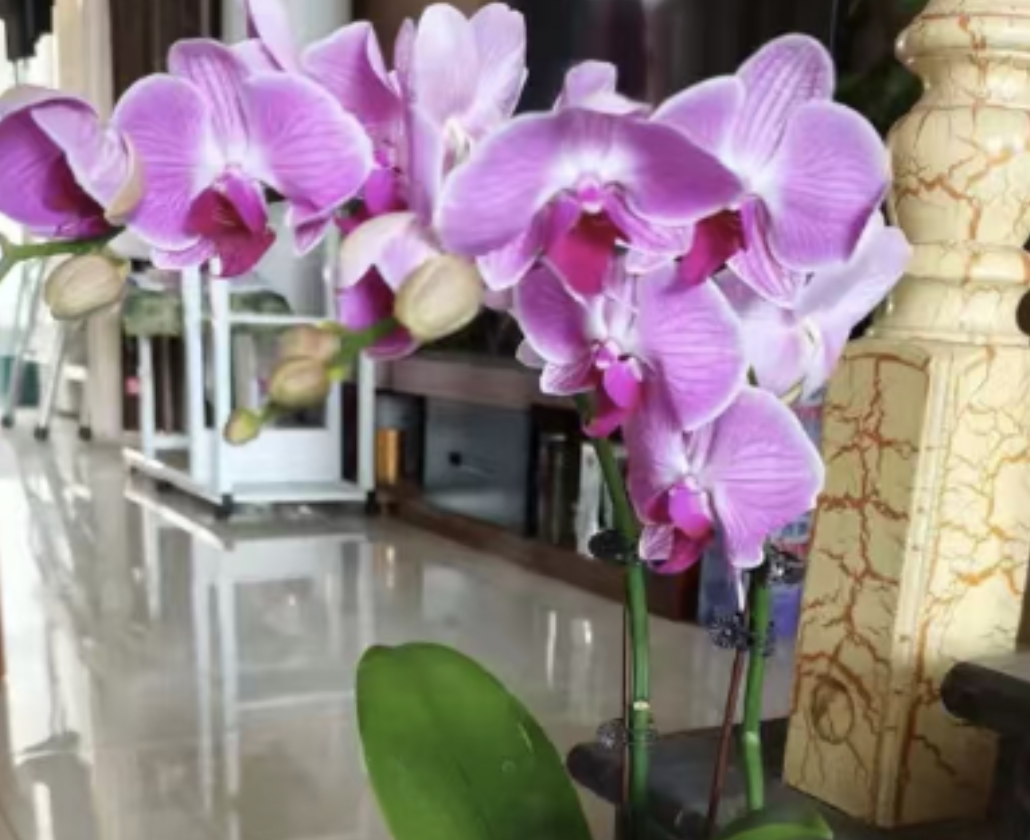As a star variety among orchid plants, the Phalaenopsis Tulcan has unique flower shapes. Its petals are in a neat diamond shape, in a soft pink color, setting off against the bright orange lip. The flower size can reach 7 cm, and it is extremely eye - catching when in bloom.
The Phalaenopsis Tulcan plant is usually about 50 cm in height. It often has multiple branches and many flowers, presenting a cluster of blossoms, and has a very high ornamental value. Whether placed on the coffee table in the living room or decorated on the window sill of the study, it can add an elegant and romantic atmosphere to the indoor space.
Reasons and solutions for the unopened flower buds of Phalaenopsis Tulcan:
1. Temperature factor: The suitable temperature range is 18℃ - 28℃. When the temperature is lower than 15℃ or higher than 28℃, the growth of flower buds will be affected. In winter, it is necessary to keep warm, and in summer, cool down and maintain good ventilation.
2. Insufficient light: If there is a long - term lack of light or excessive light, the flower buds are difficult to open. It should be placed in a place with bright diffused light. In summer, shade it to avoid direct sunlight.
3. Humidity imbalance: The appropriate air humidity is 50% - 70%. When it is dry, use a humidifier. When the humidity is too high, strengthen ventilation. You can place a shallow plate filled with water next to the flower pot to increase humidity.
4. Nutrient deficiency: During the flowering period, a lack of phosphorus and potassium fertilizers can cause the flower buds to be unable to open due to insufficient nutrients. Apply thin phosphorus and potassium fertilizers every 1 - 2 weeks, following the principle of "applying thin fertilizers frequently".
Precautions for the daily maintenance of Phalaenopsis Tulcan:
1. Substrate: Choose breathable substrates such as sphagnum moss and bark, and replace them every 1 - 2 years. When replacing, carefully take out the plant, remove the old substrate, and fix it in the new substrate.
2. Watering: Follow the principle of "watering when the soil is dry and stopping when it is wet". Water 2 - 3 times a week in spring and autumn, once a day in summer, and 1 - 2 times a week in winter. Use room - temperature water to soak the soil thoroughly, and the pot - soaking method can also be used.
3. Fertilization: Apply a thin liquid fertilizer once every 1 - 2 weeks during the peak growth period, and increase the application of phosphorus and potassium fertilizers during the flowering period. Fertilize in the morning or evening, and water appropriately after fertilization.
4. Pest and disease control: Common pests and diseases include soft rot, anthracnose, scale insects, etc. Keep good ventilation and check regularly. For different pests and diseases, use pesticides such as carbendazim and thiophanate - methyl for prevention and control.
What should I do if the Phalaenopsis Tulcan doesn't produce flower buds?

Share with
Tagged in :




Leave a Reply